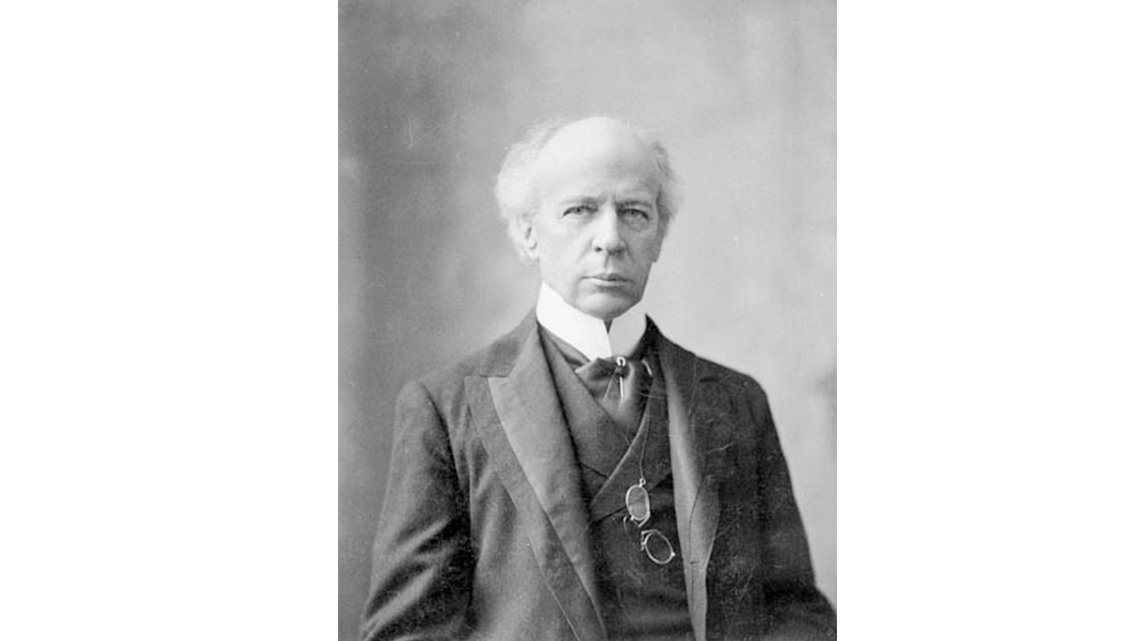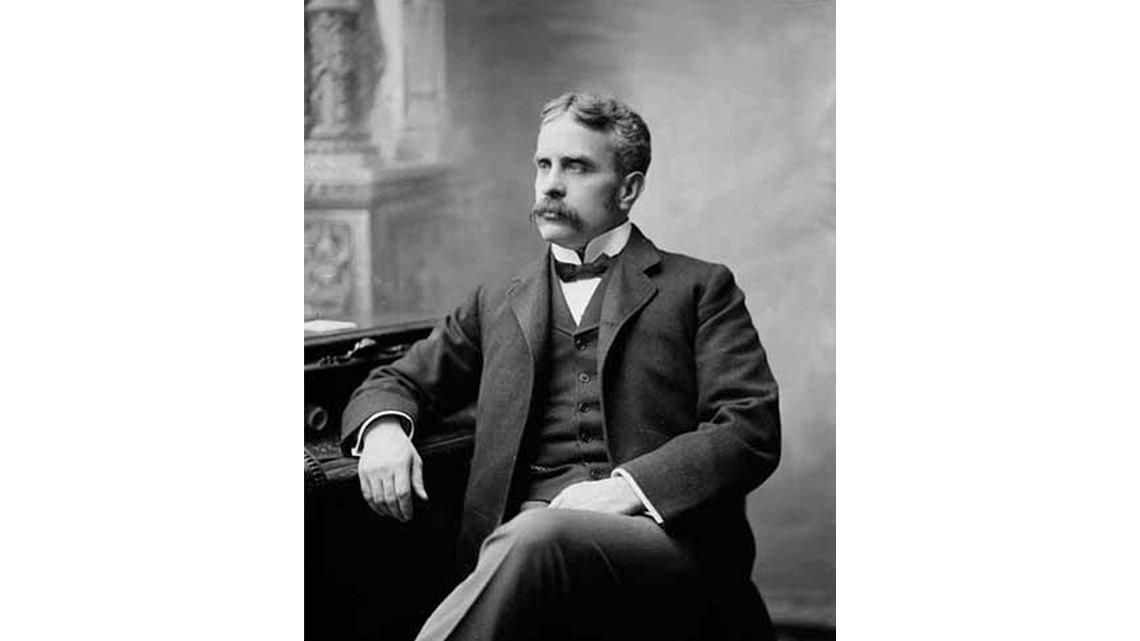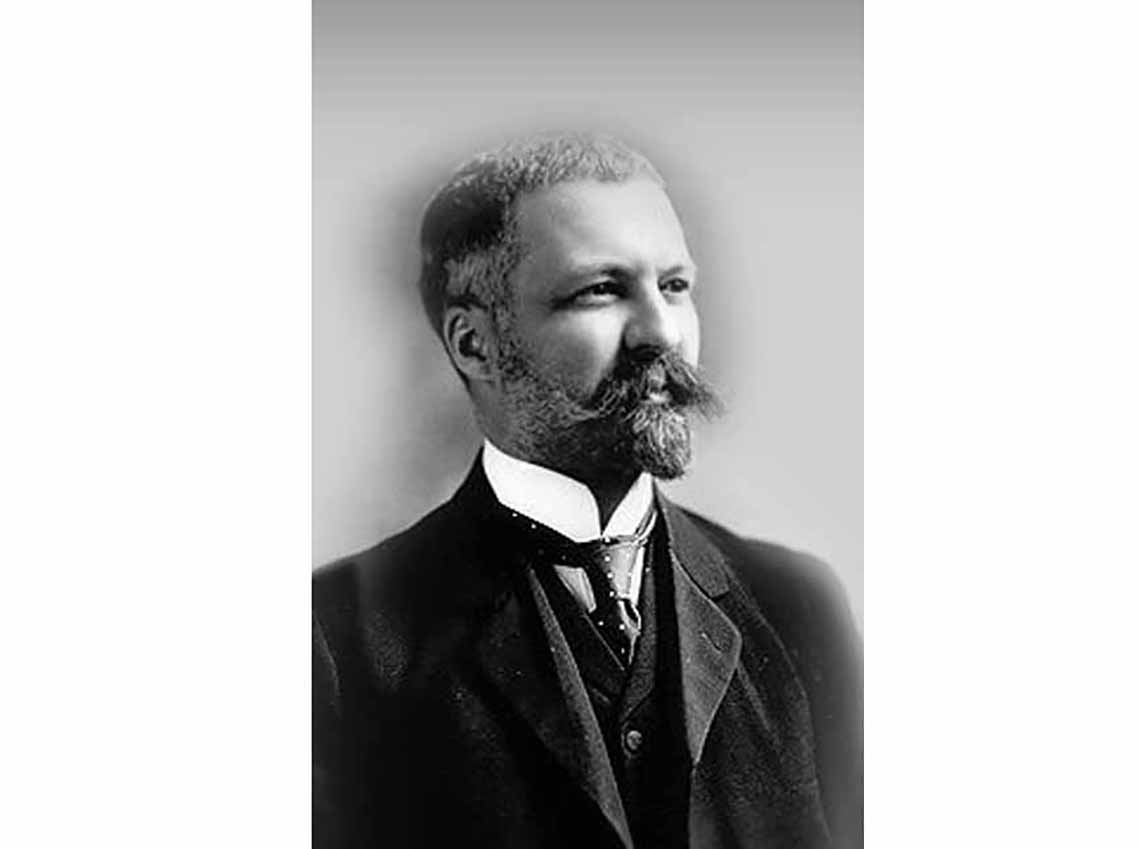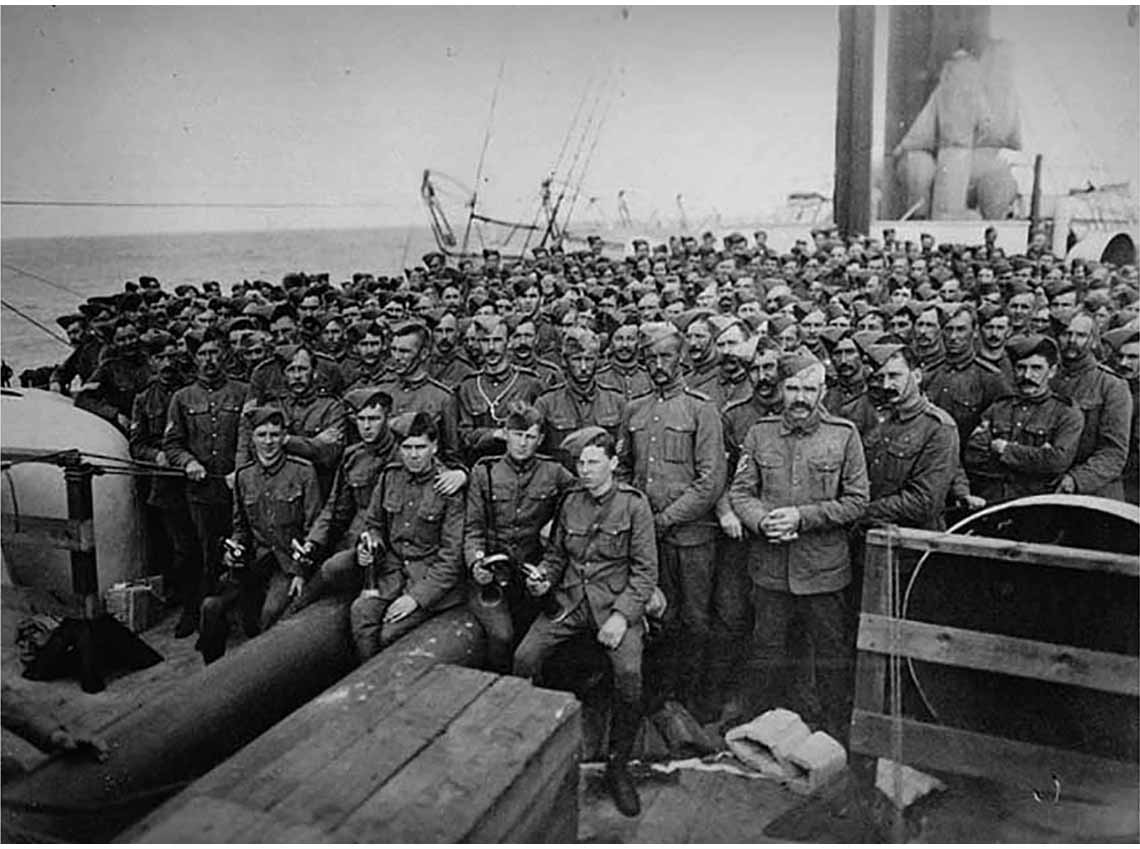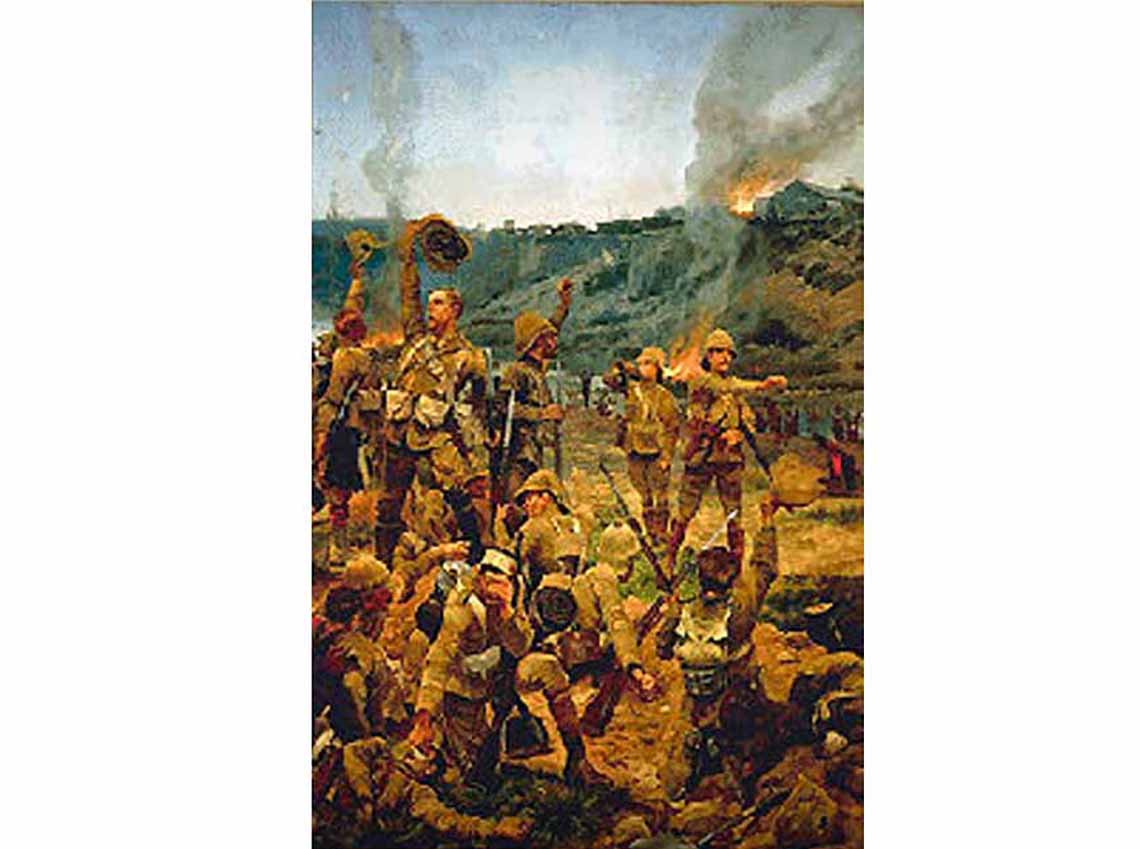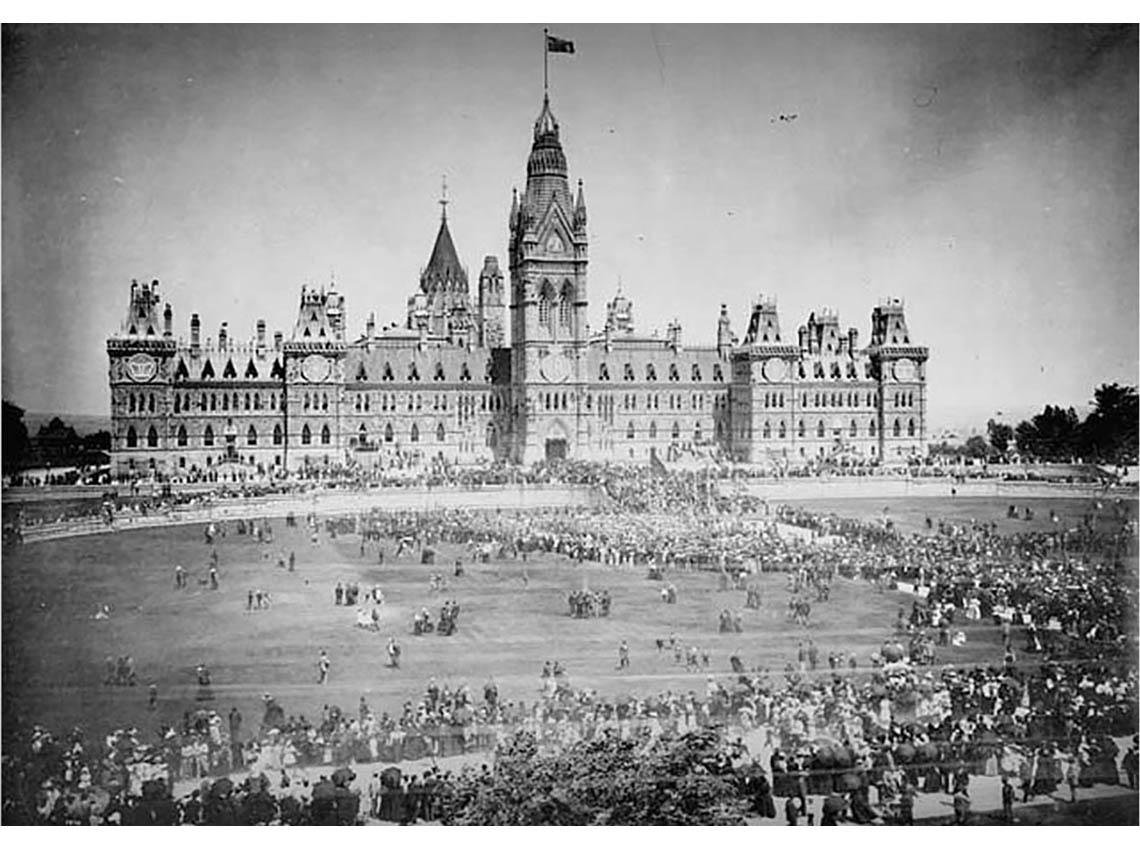Minds On
Conflict and cooperation

What is the difference between the word conflict and cooperation? What do they mean to you?
Brainstorm a list of conflicts you have learned about in Canada’s past, and a list of times when communities cooperated for the better of Canada. Record your ideas using a method of your choice.
As you work through this learning activity, add various instances of conflict and cooperation that you learn about.
Action
Task 1: Trade in Canada

What do you recall learning about the fur trade in Canada? How were Indigenous communities involved?
To learn more, press the ‘Background’ button.
Review the following definitions.
During the 19th century, the Métis were known as traders, guides, provisioners entrapreneurs, and scouts. They played a significant role in the fur trade’s transportation and communications. The Métis were among Canada’s first free traders and historically they preferred to work for themselves. They called themselves “gens du libre” or “Otipemisiwak” which meant “Free People” or “those who owned themselves.” When European colonizers began to open Canada to trade with other countries, along with other infrastructure such as railways, police, and governments, they took control of the prairie lands. This caused a decline in the fur trade. After the North-West Resistance in 1885, a European colonizer society imposed its dominance on the Prairies and they forced First Nations communities to stay on reserves, placing restrictions and preventing them from being able to leave.
As we work towards Truth and Reconciliation, information about lands and territories is constantly being updated. This map was created using information available as of July 2021 from Canadian Geographic.

This is an animated map titled “Métis Dispersal from the Red River District 1870-1880. There is a compass in the top left corner showing N, E, S, W. There is a scale under the title to show how large 0-10,000 kilometers is. The map shows a zoomed in version of Canada, with an emphasis on Manitoba, Saskatchewan, and Alberta. A small portion of Ontario and B.C. are included. There is a yellow dot on the southern part of Manitoba, near Winnipeg and it is labelled “Red River.” There are two smaller arrows that spread north and south from the dot. And three larger arrows spreading west, as far as mid-Saskatchewan
At this time, all Métis were forced to make difficult decisions about how they would fit in to the "new society" being established by colonizers. They had become socially, politically, and economically marginalized from society.
Source: Canadian Geographic,2018
Brainstorm
Independent research
The “Road Allowance” period is a key, but not well known, element of Métis history and identity. Conduct your own independent research.
Consider the following questions.
- What were Road Allowance people or communities?
- Why are they important to Métis history and identity?
Begin your search with Canadian encyclopedia, Canadian museum, and Canadian government websites. Record your ideas using a method of your choice.
Press the ‘Answer’ button to check your understanding.
Task 2: English–French tensions
From 1837 to 1885, there were a series of crises between French- and English-speaking Canadians that profoundly affected the relationship between Quebec and the rest of Canada.
In 1870, the Manitoba Act created the province of Manitoba. Section 23 of this Act guaranteed the rights of francophones and anglophones and created a system with separate schools. French schools were for the Catholics and English schools were for the Protestants. When Manitoba joined Confederation, the Protestants and Catholics were fairly equal. However, not long after they joined Confederation, many French-speaking Métis migrated farther West, which left space for English-speaking Protestants to settle in Manitoba. With new immigration policies, French-speaking people became more and more of a minority (smaller number of a part, especially a number that is less than half).
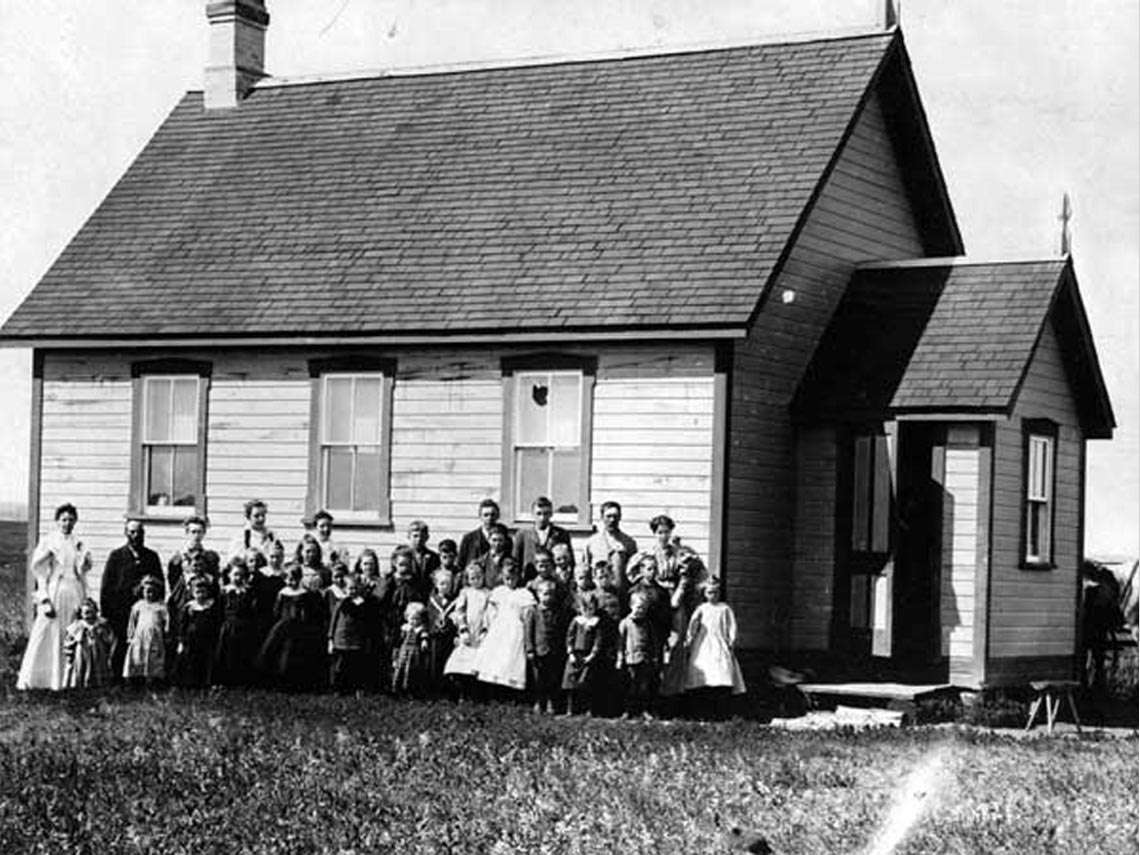
This image is of a small house. There are three windows on the front and a door on the far right. In front of the house there are many children wearing school uniforms. There are a few adults standing behind some of the children.
The Manitoba Schools Question was caused by a series of provincial laws that were passed between 1890 and 1896, such as:
- French was abolished as an official language
- Catholic schools would now only be private, and therefore needed to be paid for by parents
- Even though they were funding their own schools, Catholic parents still needed to pay taxes, which funded the public Protestant schools
These new laws meant many of the Catholic, French-speaking children were forced to join the public system and the issue of religious education became a struggle of identity. Manitoba’s French-speaking population felt that their language and culture were being threatened and that the rights they had been promised under the Manitoba Act were being violated.
Brainstorm
Reflection
Do you think these new rules would last? Why or why not?
Press the ‘Hint’ button if you need some help getting started.

This issue quickly swept all of Canada and engulfed the entire country. It divided French and English Canadians and created tension between Catholics and non-Catholics, who called on the provincial and federal government to take a stance. Towards the end of the 1800s, a compromise was made – Catholic teachers could be employed in schools with forty or more Catholic children, and if requested by enough families, religious instruction would be permitted for half an hour a day. This controversy is still remembered as one of the most important fights, and losses, for French-language rights in Canada.
Source: Dawson,2011
Do you notice any similarities or differences with our modern-day education system in Canada? Create jot notes using the following printable and fillable Modern-Day Education System Similarities and Differences graphic organizer.
|
Similarities |
Differences |
|---|---|
Press the ‘Activity’ button to access Modern-Day Education System Similarities and Differences.
Press ‘Possible Answers’ to check your understanding.
|
Similarities |
Differences |
|---|---|
|
|
Reading Time
French education policies in Ontario - now and then
To learn more about the impacts of the Manitoba Schools Question, read the following article on how policies continued to change between then and now.
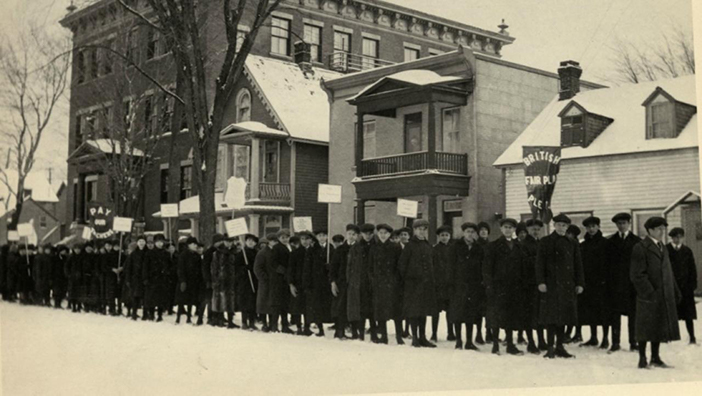
Press tvo today to access "Why Ontario Once Tried to Ban French Schools."
TVO dot org (Opens in a new tab)Task 3: The election – who would you vote for?
A federal election took place in the year 1911. At the time, Sir Wilfrid Laurier had been Prime Minister for 15 years and had won the last four elections. Laurier's opponent in the 1911 election was Robert Borden. There were two main issues that people were considering when they voted.
- Reciprocity – this refers to free trade between Canada and the United States, including the Reciprocity Treaty, signed in the 1850s.
- The Reciprocity Treaty was signed in 1854 between the United States and British North America (Canada) and was to remain in force for 10 years. It gave US fishermen access to Canada’s Atlantic coast fisheries and allowed Canadian fishermen access to US coastal waters. The treaty established free trade of a considerable number of natural resources.
- The Creation of a Canadian Navy
Explore the following carousel of federal election candidates and political platforms in the 1911 election. As you are exploring, consider the pros and cons of each political platform for Canada.
Brainstorm
Reflection
Based on what you have learned so far, who would you vote for in the 1911 federal election? Why would you vote for this candidate?
Press the ‘Hint’ button if you need some help getting started.
To find out who won, press the ‘Reveal Winner’ button.
Task 4: External politics – The Boer War
The Boer War began as a conflict in 1899 between the British Army and the Dutch settlers in South Africa. When Britain asked all of its colonies for help, Canada agreed to send volunteers to serve under the British command in the Boer War. This was significant because it was Canada’s first foreign war.
Explore the following carousel to learn more about Canada’s role in the Boer War.
See what you know!
Explore the following multiple choice questions about The Boer War. Choose the correct answer for each question.
Consolidation
Task 1: Historical significance
What is historical significance?
Historical significance is the process you use to evaluate what was significant about selected people, events, and developments in history.
Throughout this learning activity, you explored a variety of historical events, people, and places throughout Canadian history, with a specific connection to politics in Canada.
Match the specific event, person, or development to the appropriate historical significance.
Task 2: Cooperation or conflict

Identify the following events as cooperation or conflict and explain why in one sentence. Record your ideas using a method of your choice.
- The Road Allowance
- Manitoba Act
- Manitoba Schools Question
- Boer War
- Election of 1911
Were there any events that you felt were an example of cooperation AND conflict? Why is this?
Reflection
As you read the following descriptions, select the one that best describes your current understanding of the learning in this activity. Press the corresponding button once you have made your choice.
I feel...
Now, expand on your ideas by recording your thoughts using a voice recorder, speech-to-text, or writing tool.
When you review your notes on this learning activity later, reflect on whether you would select a different description based on your further review of the material in this learning activity.
